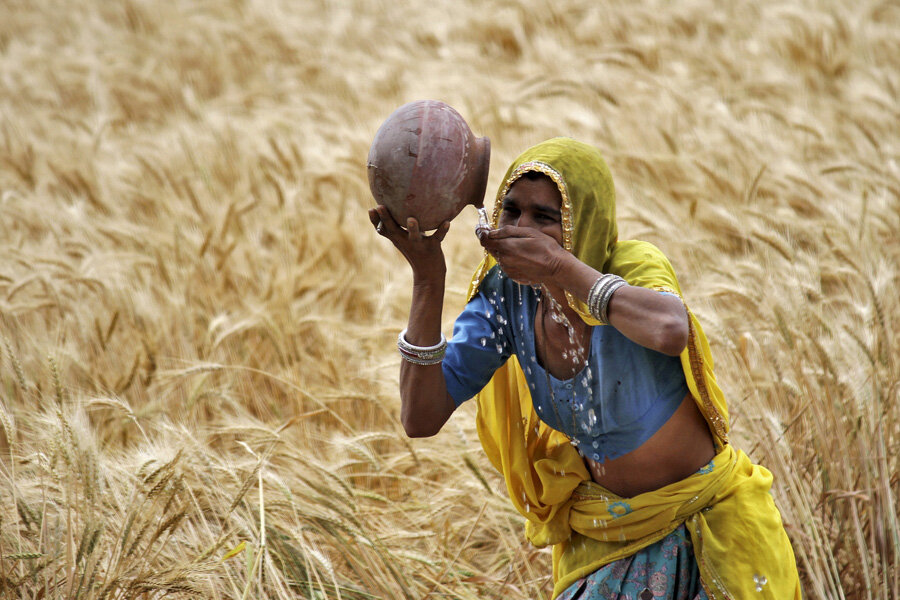Making strides in women farmers' income in India
Loading...
According to the United Nations Food and Agriculture Organization, women are responsible for 43 percent of the agricultural labor force in developing countries. Yet women rarely reap benefits from their contributions. The International Crops Research Institute for the Semi-Arid Tropics (ICRISAT), a nonprofit organization promoting sustainable agricultural practices in India and Africa, is working to change that. ICRISAT has made notable strides for women in India, working against gender inequality in the rural sector. The organization has supported 23 watershed projects in nine Indian states, expanding accessibility to services that “financially empower women farmers.”
In India, 70 percent of the population is dependent on agriculture, while 51 percent of agricultural land exists in areas with low rainfall and poor soil composition. ICRISAT’s Integrated Watershed Management Projects work to bring water to these arid lands—structuring its initiatives to promote economic growth for female farmers to transform them into businesswomen. Through partnerships with public and private sector institutions, the ICRISAT watershed projects provide poor female farmers with low-interest loans, financial guidance, and training in nutrition, health, and crop management.
In 2002, ICRISAT brought GreenSIM—a mobile technology that greatly enhances farm operation efficiency—to Ardash Mahila Samakhya, an all-women farming collective in Telanga, India. Farmer Jawadi Vimalamma shared that after just three years of using GreenSIM, “profits have increased from 5,000 to 20,000 rupees (US$80–232 dollars) each season.”
In the semiarid state of Madhya Pradesh, the Padarlya-Siyalwada Model Watershed project helped bring Janki Bai's “dream of growing rice in her field” to fruition. After securing a loan through the watershed project, Janki built a water-harvesting pond to help cultivate her rice field. The project has brought financial stability to Janki’s family, and also provides water for the rest of her community.
Hari Bai, another female farmer living in Madhya Pradesh, has also benefited from the Padarlya-Siyalwada Model Watershed project, especially from the initiative’s self-help groups. ICRISAT Self-Help Groups aim to educate women on farming techniques and provide them with the tools for financial independence. Through the watershed initiative, Hari constructed a rainwater harvesting pond that has allowed her to increase crop yields despite erratic weather conditions. As a result, Hari expanded her agriculture business to include goat breeding, which feeds her family and creates an additional revenue stream.
In January, the newly appointed ICRISAT director general Dr. David Bergvinson proclaimed, “In tackling the poverty challenge persisting in the drylands of Asia and sub-Saharan Africa, innovation has to be driven by the demands of farmers and markets, and must recognize the important role of women and youth to enable inclusive market-oriented development.” Bergvinson believes that gender equity and scientific innovation are essential if global agriculture is to achieve sustainable advancement.







